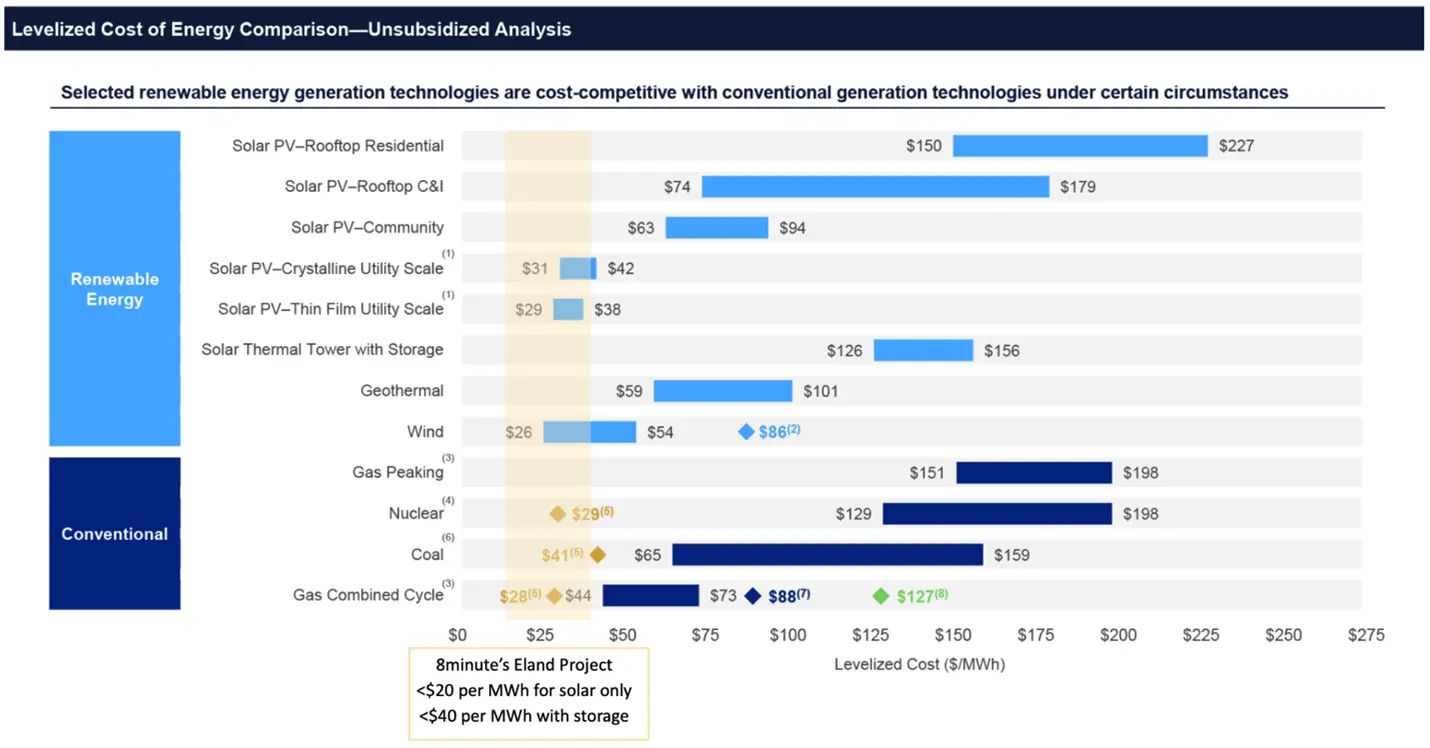Technology
Fact Check: Is Solar Really Cheaper than Gas?
Oct 28, 2020
At a major conference for energy dealmakers and finance players last year, I found myself chatting with a utility executive from Alabama who was looking at contracting a new gas plant. Genuinely curious, I asked him if he’d ever considered solar. He responded with the familiar refrains: that solar is too expensive and unreliable – and that he wasn’t willing to gamble on an alternative energy.
If we’d been having the conversation in 2009, he might have been right.
But it was 2019, and solar was already not only cheaper than natural gas, but also – when paired with energy storage – more reliable, too.
The executive told me he had seen the headlines about 8minute’s Eland Solar & Storage Center, which has achieved the cheapest solar-plus-storage prices in history, and less than the cost of fossil fuels. The project, which will deliver 7% of Los Angeles’ energy, will be even more reliable than polluting gas plants – able to more rapidly provide on-demand electricity from its batteries during peak evening hours and at night.
The executive had initially dismissed these numbers as media hype, but as we dug into the realities of today’s solar technology, his skepticism quickly turned to excitement as he realized the great opportunity before him.
My experience with the utility executive was not unique. Despite the clear evidence of clean energy’s viability as a replacement for fossil fuels, I’ve encountered many individuals – within the industry and in the general public – whose perception of solar power is limited to the rooftop panels they see on their (often wealthy) neighbors’ houses. Many are unaware that the economics of solar have changed so rapidly that today, solar power is cheaper than fossil fuels in countries around the world.
And the clean energy industry is only picking up speed.
Already, one third of Americans live in a city or state that has already committed to or achieved 100% clean electricity. California’s mandate is for 100% clean power by 2045, and U.S. presidential candidate Joe Biden’s climate plan is even more ambitious, calling for 100% renewable electricity nationwide by 2035. Polling suggests that Americans across the political spectrum want a clean energy transition, perhaps recognizing not only its key role in addressing the climate crisis, but also the exciting opportunity it poses to revolutionizing our economy.
From a cost standpoint, renewables carry less risk than fossil fuels, since renewable power purchase agreements lock in prices for their duration and (unlike fossil fuels) aren’t subject to price volatility based on global supply. Furthermore, renewable prices won’t increase in the event of decarbonization regulation, like a carbon tax.

But there’s another reason for the sunny forecast for renewables – even in parts of the country where fossil fuels remain dominant. And that is the increased attention to energy storage, which I wrote about recently.
Recent solar-plus-storage projects – including our Eland project – have silenced renewable energy critics, by showing how they can both support significant deployment of renewables throughout the grid and alleviate issues that the energy sector (including fossil fuels) has historically faced.
With projects like Eland, we have changed the mindset of power providers like my utility executive friend, who once viewed solar integration as a pesky mandate to be met. Now, solar-plus-storage is their favorite tool in their energy toolbox.
While the politics around the climate crisis will continue to churn over the coming years, one thing is certain: today, solar-plus-storage is on a glide path to unlocking to America’s clean energy future.

